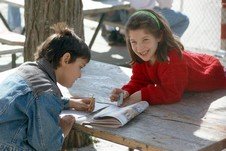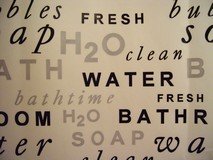|
Vocabulary Development
Vocabulary
A varied vocabulary is quite possibly the most important factor which drives a school-age child's ability to learn new information. A student's ability to use language, in a range of contexts, is largely reliant on their semantic word knowledge. But what is semantic word knowledge? Why do we speech-language pathologists place such importance on its development? Well, semantic word knowledge is the range of words a person knows and understands, and can use in sentences, both oral and written.  A more formal word to describe word knowledge is a child's lexicon.
A more formal word to describe word knowledge is a child's lexicon. The best way to think of a person's lexicon is as a mental dictionary. Typically, a young student with a rich mental dictionary and strong language skills has great flexibility when using words. Their sentences are articulate, and the words they pepper them with are lively and almost adult like.
Children with language disorder generally have a vocabulary that is poor in comparison to children of the same age. They may present with poor word and world knowledge and have difficulty expressing their thoughts because of lack of flexibility in using words. They have a lot of trouble remembering new words and making links to words in their lexicon. If the child with language difficulty is unable to gain an understanding of the meaning of a particular word, then the new word is rarely committed to memory. It essentially becomes lost. The goal of semantic language intervention is not to just teach new words, but put in place a meaning based structure that improves reading comprehension.. A meaning based structure creates a skill set that allows the child with learning disability to better commit new words to memory. Effective teaching of meaning based language skills include using the context of the passage to aid comprehension. Among the more effective methods of building word knowledge is shared book reading. References DeKemel, K.P. (2003) Intervention in Language Arts: A Practical Guide for Speech-Language Pathologists. Butterworth-Heinemann. Kaderavek, J.N. (2011) Language Disorders in Children: Fundamental Concepts of Assessment and Intervention, Allyn & Bacon Owens, R.E. (1996) Language Development: An Introduction, Allyn & Bacon Paul, R. (2006) Language Disoders form Infancy through Adolescence. Assessment and Intervention. Mosby Content Updated 8/11 |



 Though the two concepts are related, semantics and vocabulary are in fact quite different.
Though the two concepts are related, semantics and vocabulary are in fact quite different. 